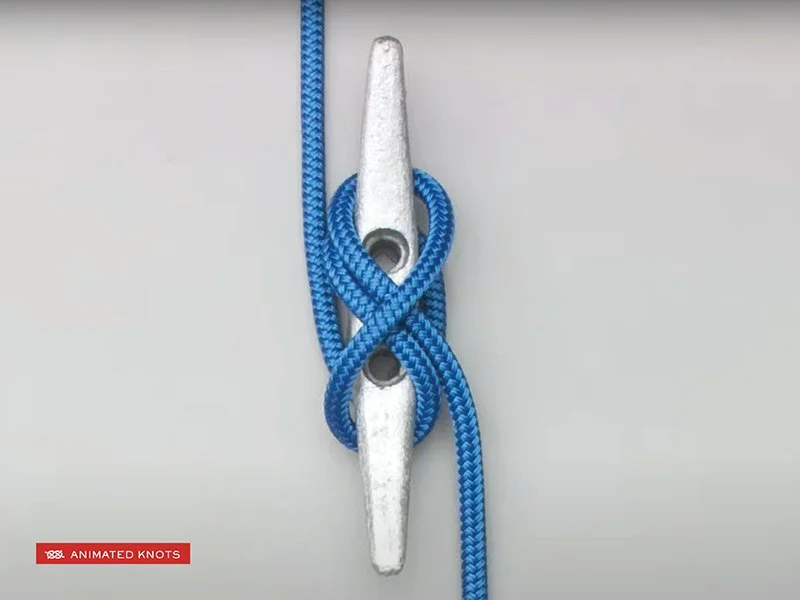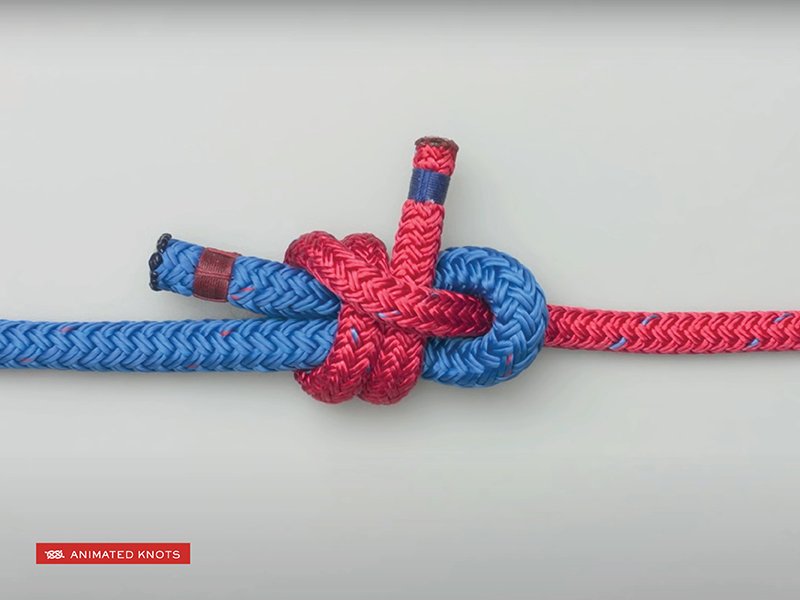5 Essential Boating Knots
Madelyn Mills
Protecting your pride and joy is an essential part of owning a boat. Knowing how to tie a good knot is an essential skill for any boat owner, helping to keep you and your boat safe, secure and protected.
Below we have outlined 5 essential boating knots you should learn. Each knot has a slightly different purpose, from securing your boat to the dock, to joining lengths of rope together. Familiarising yourself with these knots means you can cast off with confidence and keep boating for years to come!
Bowline Knot
The Bowline Knot is one of the oldest and most used knots in the boating world. Sometimes referred to as the ‘King of the Knots’ this simple knot will allow you to create a fixed, slip or for rescue operations.
To make a Bowline Knot, start by making a small loop in your rope about 45cm from the end. Run the tag end of the line through the loop, wrap it around the main line, then pass it back through the loop again and pull tight.
Cleat Hitch
The Cleat Hitch is recognised as one of the fastest, easiest and strongest knots for securing rope to a cleat. It is also very simple to untie. Like a cowboy hitches his horse, the Cleat Hitch knot is essential for tying your boat to the dock and prevent it drifting away without you.
To tie a Cleat Hitch, begin by wrapping the line once around the cleat then over the top twice, making figure-eight patterns. On the last wrap, rotate the line into a loop and flip it upside down before wrapping it around the cleat. Pull tight to set.
Clove Hitch
Often considered one of the most important knots, The Clove Hitch has been around since the sixteenth century and was officially named in 1769. The Clove Hitch is a simple knot, perfect for tying boats to posts and other fixed objects.
To tie a Clove Hitch, start by taking the end of your rope and make a loop, laying the line over itself. Then make a second loop, again laying the line over itself. Overlap the loops one over the other, slip it over the post you want to tie-off to, and pull tight.
Square Knot/Reef Knot
The Square Knot, also known as the Reef Knot is an ancient knot used to connect two separate lines. The Square Knot is estimated to be at least 4,000 years old.
To make a Square Knot, begin by wrapping the two lines together, left over right. Then wrap the tag ends over each other again, this time right over left. Pull the two standing ends apart.
Sheet Bend
The Sheet Bend, also known as the Weaver’s Knot is a quick knot that was first used to tie ropes to sails. It has been used throughout history in textile mills. The Sheet Bend is the perfect knot for joining two ropes of different diameters.
To tie a Sheet Bend knot, start by making a U-shaped loop in the first line and run the second one through it. Wrap the second line around both looped strands of the first one, then pass the tag end back out through the same loop it came in through and pull snug.
Looking for other ways to protect your boat or vessel? View our range of Australian-made marine fender solutions designed to deliver protection, security and enhanced safety.
https://bossmarine.com.au/
Images for this article have been sourced from: https://www.animatedknots.com/





